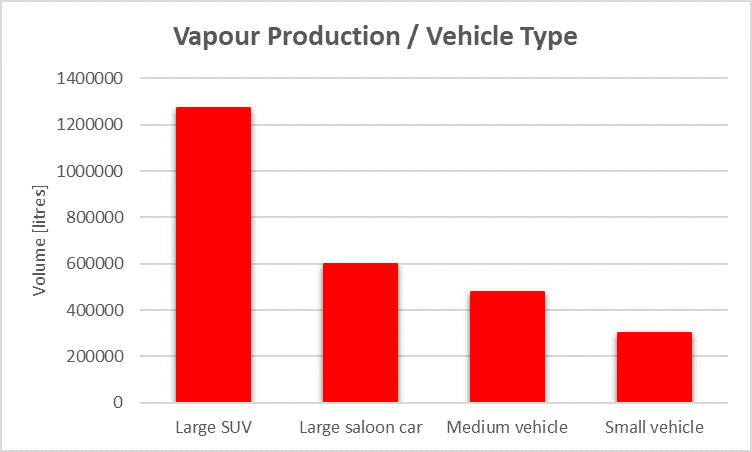TT Club, the specialist international freight insurance provider is seeking greater emphasis on the critical dangers of toxic gas emissions associated with lithium-ion battery fires. The failure of such batteries has the potential to occur with no prior warning, or with such speed that there is typically no time to react to any warning signs.
London, 7th September 2023
Devastating consequences of rapidly spreading, and often challenging to extinguish fires involving the batteries particularly in electric vehicles (EV) on board ships, and other parts of the supply chain have been well-documented in recent months. There is however less awareness of the highly toxic combustion products that are released and their respective impact to the health and wellbeing of those exposed to the gases.
Based on the evidence of past fires the time between the initiation of a failed battery igniting to a discharge of toxic vapour can be measured in seconds rather than minutes. This is due to a process known as thermal runaway. The rapid sequence of events typically occurs where an internal electrical short within one of the battery cells generates heat; this breaks down the internal structure of the battery, increasing the rate of the reaction in an ever-increasing cycle. There is often a dramatic release of energy in the form of heat and a significant emission of toxic gases.
Neil Dalus of TT endeavours to paint a picture of the dangers. “During a lithium battery thermal runaway event, research has shown that significant amounts of vapour can be produced per kWh (kilowatt hour). In many common supply chain scenarios, including ships’ holds and warehouses, the reality is that such vapour clouds are likely to accumulate. Even when the clouds are able to disperse, the potential toxic effects may occur at lower concentrations.”

Source: Journal of Loss Prevention in the Process Industries 80 (2022)
Drivers, stevedores, ships’ crews and first responders attempting to control the blazes encounter what might appear to be smoke but is in fact a mix of toxic gases, generated quickly and in large volumes. These gases once in the atmosphere behave differently to smoke, often pooling at floor level due to their density. “Traditionally where fires and smoke are concerned one would stay low to avoid inhalation, doing so where lithium battery fires are concerned is likely to prove problematic,” observes Dalus.
The toxicity of gases given off from any given lithium-ion battery differ from that of a typical fire and can themselves vary but all remain either poisonous or combustible, or both. They can feature high percentages of hydrogen, and compounds of hydrogen, including hydrogen fluoride, hydrogen chloride and hydrogen cyanide, as well as carbon monoxide, sulphur dioxide and methane among other dangerous chemicals.
In terms of hazards to the wellbeing of those in the vicinity of such an incident, one particularly problematic component is hydrogen fluoride (HF). Although HF is lighter than air and would disperse when released, a cloud of vapor and aerosol that is heavier than air may be formed (EPA 1993). On exposure to skin or by inhaling, HF can result in skin burns and lung damage that can take time (hours to weeks) to develop following exposure. HF will be quickly absorbed by the body via skin and lungs depleting vital calcium and magnesium levels in tissues, which can result in severe and possibly fatal systemic effects. The hydrogen content of the released gases can give rise to vapour cloud explosion risks which have the potential to cause significant damage.
TT advocates a range of measures to mitigate the risks. A prudent starting point would be to perform a fire risk assessment, considering the specific hazards presented by lithium-ion batteries. Risk mitigation considerations thereafter could include providing operatives with certified full-face self-contained breathing apparatus, chemical-resistant boots among other protective equipment, as well as drench showers for post-response decontamination. Strategic positioning of fire-fighting equipment should also be a key consideration.
Early detection of such an incident can also be pivotal in managing the response, camera and thermal imaging could enable an expedient response. Such equipment might have already become commonplace for some modes, however conducting a thorough risk assessment for example when cargo is stored in warehouses would be prudent. As Dalus comments however, “Given the hazardous nature of this vapour, if any of these measures are not in place then the best course of action is to evacuate the area and leave the incident response to the emergency services, ensuring that the known risks are appropriately communicated.”
Consideration should also be given to the location of any incident that might include clean up and entry. The gases produced potentially leave toxic deposits on all surfaces and in the atmosphere. Therefore, once the incident is under control, potential hazards remain.
A full report on the dangers of emissions from lithium-ion fires, as well as detailed safety advice is available from TT’s websiteHERE
TT Club will be hosting a webinar on the subject of ‘Lithium-ion batteries in the logistics supply chain’ on 11th October. To register to attend please click Registration (gotowebinar.com)
About TT Club
TT Club is the established market-leading independent provider of mutual insurance and related risk management services to the international transport and logistics industry. TT Club’s primary objective is to help make the industry safer and more secure. Founded in 1968, the Club has more than 1100 Members, spanning container owners and operators, ports and terminals, and logistics companies, working across maritime, road, rail, and air. TT Club is renowned for its high-quality service, in-depth industry knowledge and enduring Member loyalty. It retains more than 97% of its Members, with a third of its entire membership having chosen to insure with the Club for 20 years or more.






